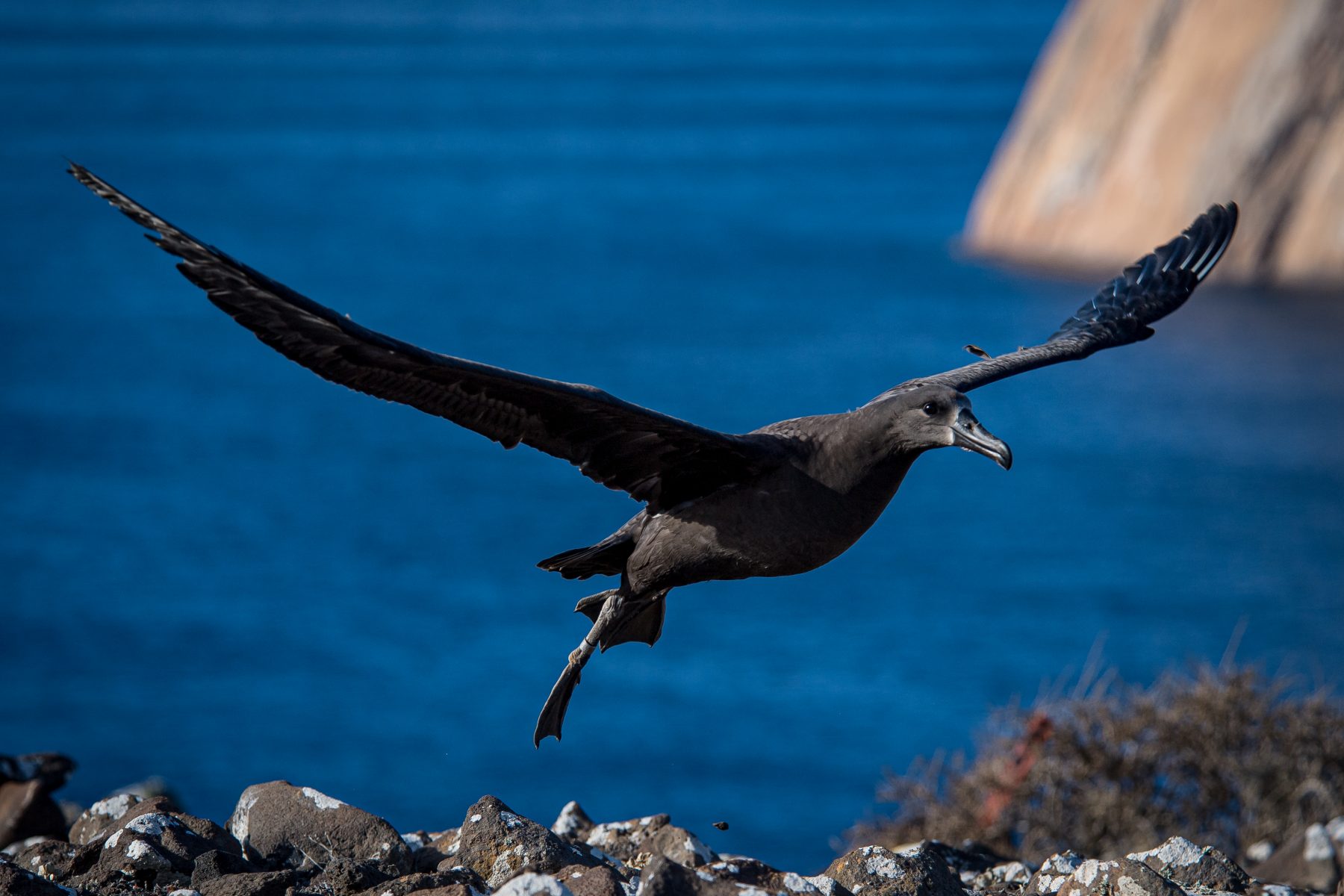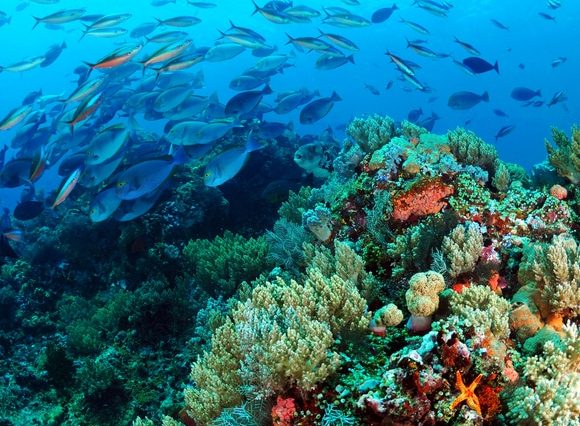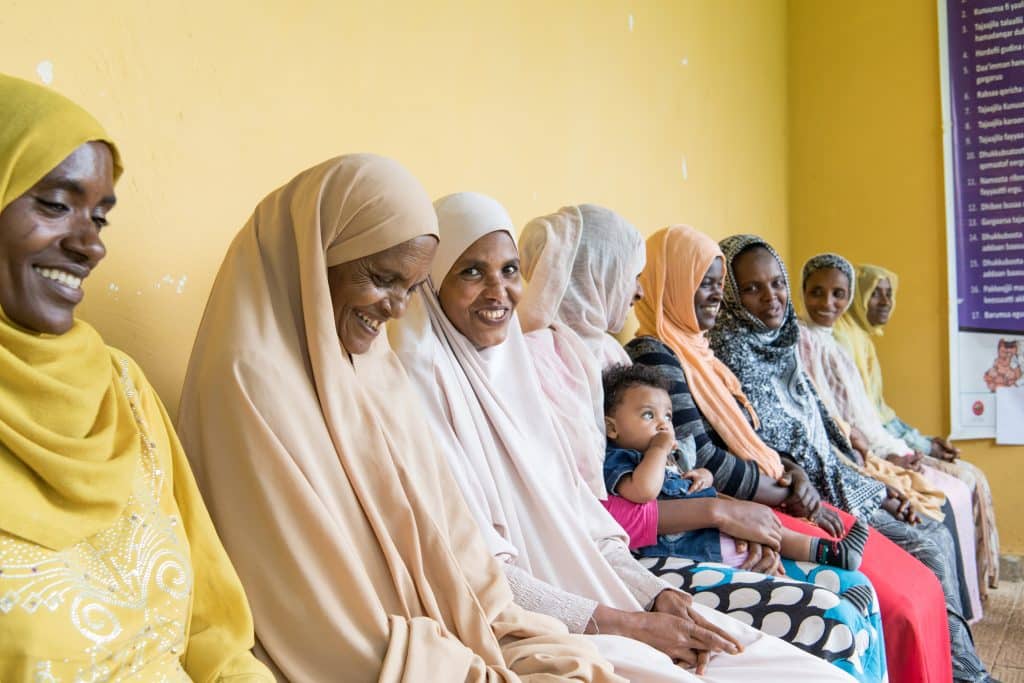The main finding of the recent climate report from the United Nations Intergovernmental Panel on Climate Change (IPCC) is clear: to curtail rising temperatures, we must take action now. As the ocean heats up, destructive erosion and flooding caused by sea level rise are not only putting humans at risk but also also threatening coastal habitats that support many fish, birds, and plants. Fortunately, scientists and conservationists are already helping some species become more resilient to the impacts of climate change by using research and technology in innovative ways.
Conservation Takes Flight
In January, a team of conservationists and scientists worked together to collect 21 Black-footed albatross eggs. Snuggled into specially designed incubators, the eggs were buckled into the seats of a commercial plane and flown 3,728 miles from their original nesting ground in Midway Atoll northwest of Honolulu, Hawaii to Guadalupe Island, a remote volcanic island in Mexico. The team repeated the effort in February, this time transporting 12 chicks.
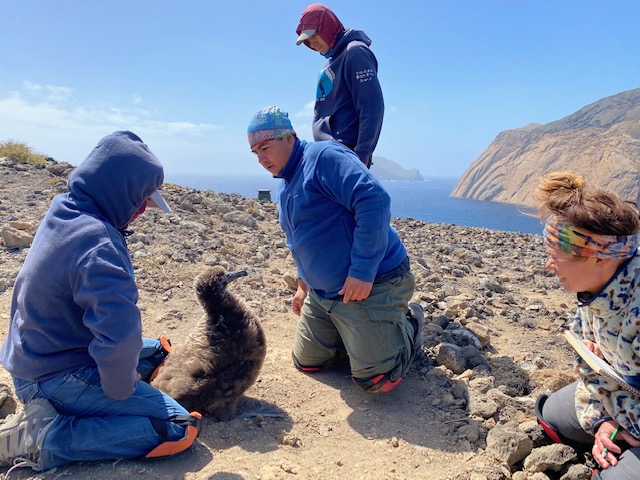
These historic flights were part of a multi-year translocation effort led by Pacific Rim Conservation (PRC) and Grupo de Ecología y Conservación de Islas (GECI), in partnership with several other nonprofits, as well as the United States and Mexican governments. It is an example of how we can use existing tools to take action now and stave off the impact of climate change before a species becomes endangered.
The Black-footed albatross is listed as “near threatened” by the International Union for Conservation of Nature (IUCN), but rising sea levels are increasingly putting their nests, which these large birds often build on the coast, in danger of flooding. A 2015 study estimated that a two-meter sea level rise and storm waves would flood up to 91% of the nests of Midway Atoll’s Black-footed albatross population.
“Climate change is real and it is causing this species’ natural habitat to disappear beneath it. They need assistance now – this is not something that can wait,” explains Dr. Eric VanderWerf, director of science at PRC.
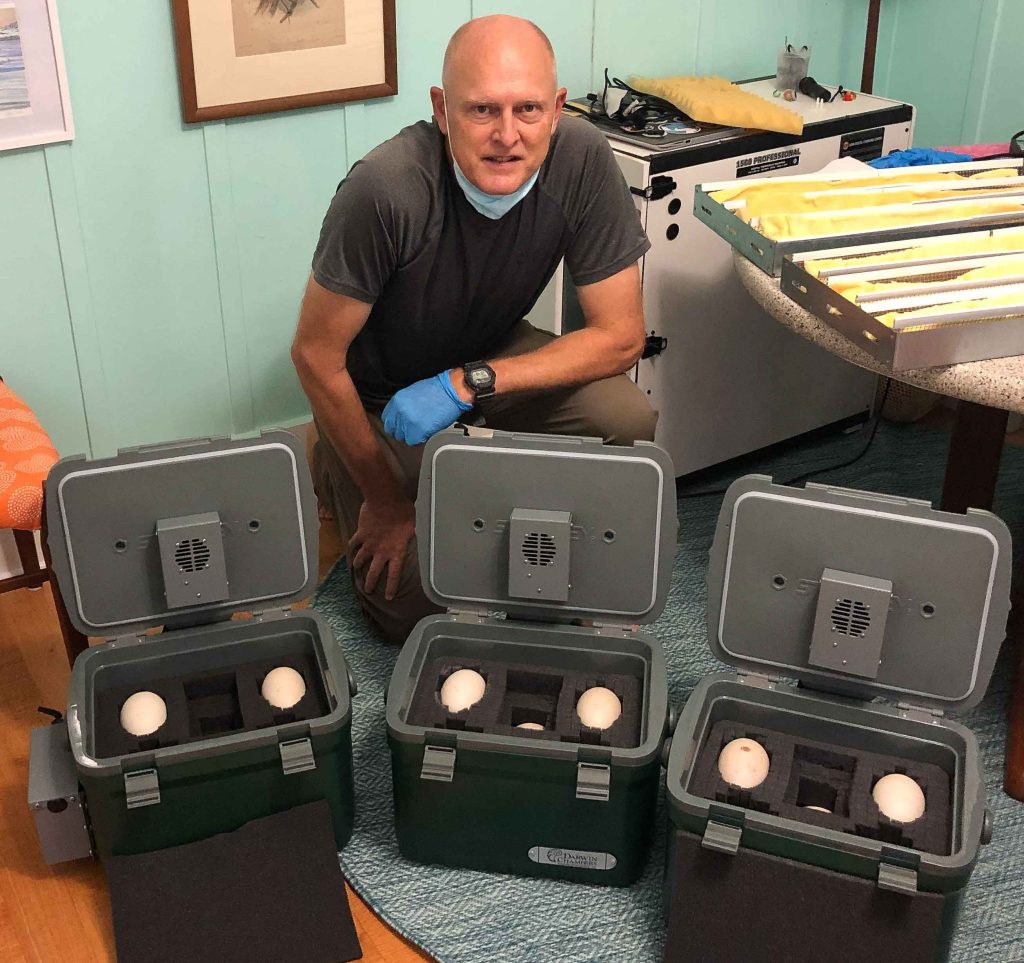
Preparing for the Move
Before they could move the Black-footed albatross eggs, PRC and GECI had to identify and secure a new home. This meant clearing the area of invasive alien species such as goats and feral cats, which could threaten the birds, and cultivating a habitat on the island that will allow the albatross to thrive, but sits high enough to avoid the risk of flooding. GECI and PRC also needed to find foster birds to hatch and care for the chicks. A native colony of Laysan albatross proved to be perfect for the role. To increase the chances that the birds will return to their new home when they are ready to nest, the team moved the eggs before they imprinted on their native Hawaiian land.
To clear the way for this first-ever effort to move seabirds between nations, PRC and GECI also had to negotiate a variety of permits and agreements between the U.S. and Mexican governments. The successful translocation created a model that other conservation groups and governments can follow to give species threatened by climate change a strong chance of survival. The project drew from previous translocation efforts done by PRC within Hawaii, and also other binational efforts, such as those to restore the California condor population in the Baja California Peninsula.
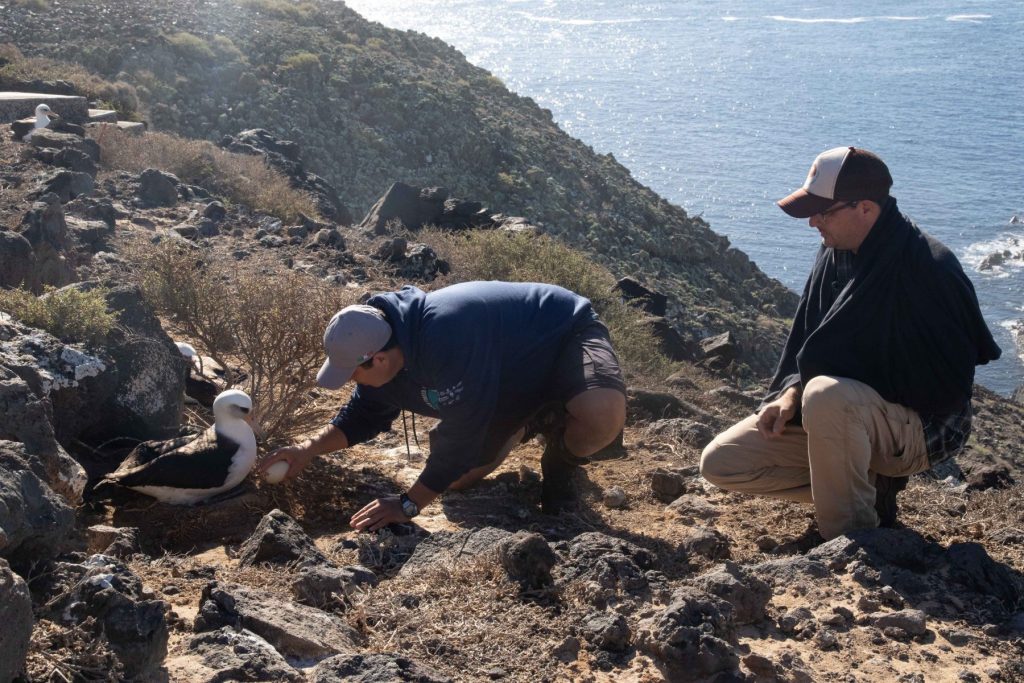
Elements of Success
In each case, understanding the unique needs of the species throughout its lifecycle is critical. For example, PRC and GECI found that the birds varied in the amount of food they needed for optimal growth rate. The team graphed each newly hatched chick’s bodyweight to determine when it needed more food or water—something that is likely instinctual for its parents.
Strong partnerships that draw on the expertise of each particular player are another key to success. In the case of the Black-footed albatross, it was important to have both the U.S.-based PRC and the Mexican-based GECI organizations co-leading the effort, tapping into their own in-country contacts—particularly when negotiating with their respective governments—and ensuring the interests of local coastal and island communities were included in the decision-making process. This effort was also backed by strong philanthropic and scientific support, including a grant from the Packard Foundation as part of our Marine Birds strategy, which aims to reverse the decline of threatened bird species associated with marine environments and support efforts to restore sustainable marine ecosystems, especially in the face of climate change.

Just last month, the last of the translocated Black-footed albatross chicks took flight from their new nesting ground on Guadalupe Island. The birds, which can spend years without touching land, are not expected to return until it is time for them to nest.
A Model for Resilience
Translocation is not a quick fix. It takes years to prepare a new home for the species and arrange transport. And, for those working on the journey of the Black-footed albatross, it will be several more years before they know for sure that the birds will return to Guadalupe Island to start their next generation. But, they do know that if the seabirds return, their nests will be safe from flooding and other climate risks.
“Yes, the birds can fly and they could move themselves – but it might not be to places where people welcome them,” explains Dr. Federico Alfonso Méndez Sánchez, GECI’s general director. “Influencing where the birds go and establishing colonies in advance can help stave off some of the human-wildlife conflict that climate change is creating.”
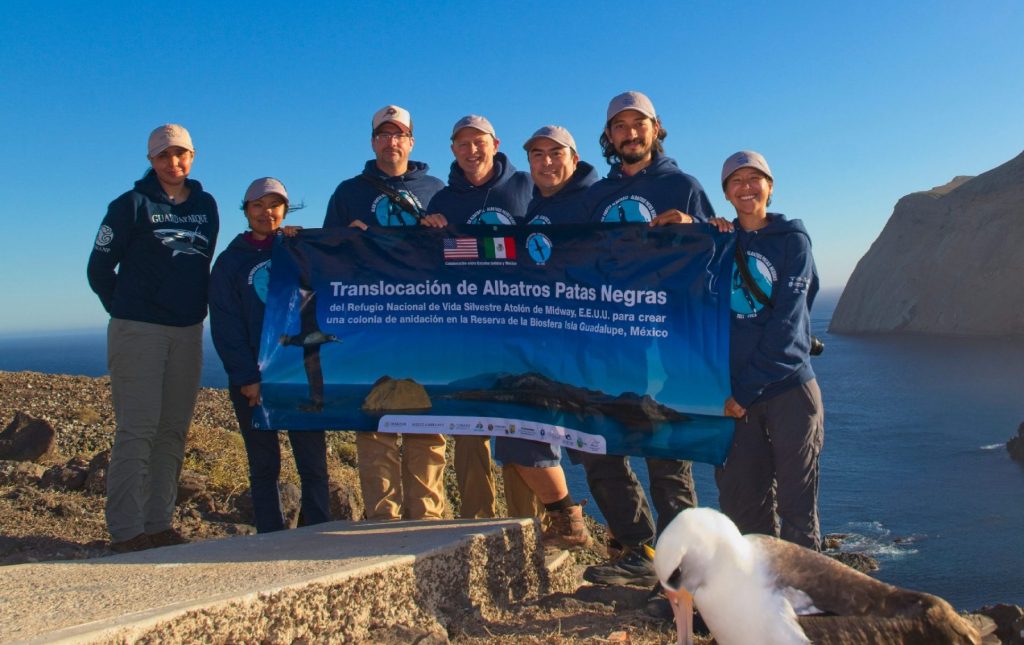
In the months leading up to November’s COP26 – the annual U.N. climate change conference when countries will come together to accelerate action toward addressing climate change – it is encouraging to see momentum growing for urgent and concrete action to address climate change. Through this incredibly complex translocation, PRC and GECI are showing that – with a lot of patience and collaboration – we can stave off the impacts of climate change in ways that work for nature and people.
Additional resources:
- https://www.islandarks.org/ (in English)
- https://www.islas.org.mx/albatros-patas-negras/ (in Spanish)
- Science Magazine article: https://www.sciencemag.org/news/2021/06/they-were-destined-drown-how-scientists-found-these-seabirds-new-island-home
- Science Magazine video: https://youtu.be/_HOG51DoFew


